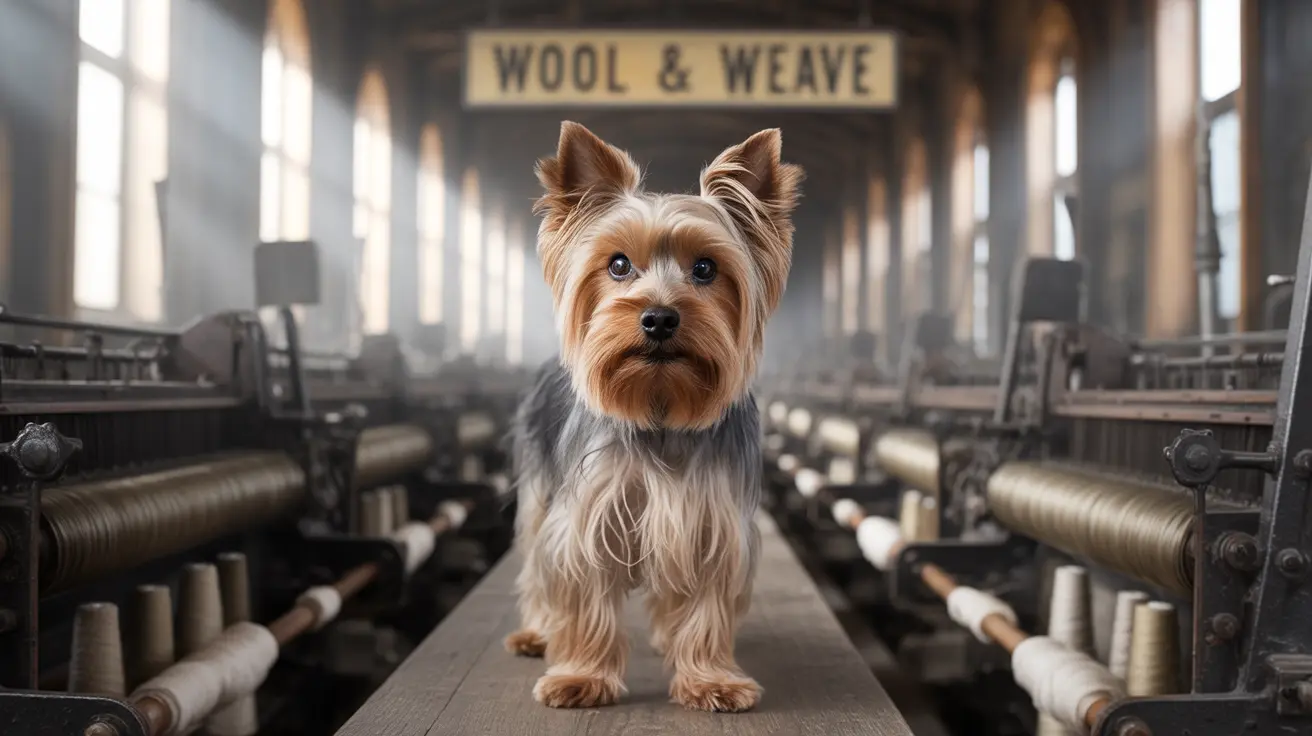Yorkshire Terriers, those tiny yet tenacious dogs we know today as beloved companions, actually have a fascinating working-class history that might surprise many modern pet owners. These small but mighty terriers were originally bred for a very specific and important purpose in 19th-century England, and their heritage continues to influence their personality and characteristics today.
Understanding what Yorkies were bred for not only helps us appreciate their unique traits but also explains why these diminutive dogs often display such bold and fearless personalities despite their small stature. Let's explore the compelling history and original purpose of this remarkable breed.
The Industrial Origins of Yorkshire Terriers
Yorkshire Terriers were developed in the mid-1800s in Yorkshire, England, during the height of the Industrial Revolution. Their primary purpose was far from the pampered lifestyle many enjoy today – they were bred to be efficient rat hunters in textile mills and coal mines.
Scottish workers who migrated to Yorkshire brought with them various small terriers, which they began breeding to create the perfect vermin-hunting companion. These dogs needed to be small enough to navigate tight spaces between machinery and in mine shafts, yet brave enough to face and eliminate rats and other rodents that plagued industrial facilities.
The Making of a Perfect Ratter
The development of Yorkshire Terriers involved careful breeding of several terrier varieties, including the Paisley Terrier, Skye Terrier, and Waterside Terrier. This combination produced dogs with specific traits ideal for their working role:
- Small size for accessing tight spaces
- Quick reflexes and agility
- Strong prey drive
- Fearless temperament
- Sharp intelligence
From Working Dog to Lap Luxury
By the late 19th century, Yorkshire Terriers began their transformation from working-class ratters to refined companion animals. This shift occurred as the Victorian upper class took notice of their attractive appearance and spirited personality. The breed was officially recognized by the American Kennel Club in 1885 and the English Kennel Club in 1886.
A pivotal figure in this transformation was a show dog named Huddersfield Ben, whose appearance and temperament helped establish the breed standard we know today. This included the signature long, silky blue and tan coat that has become synonymous with the breed.
The Modern Yorkshire Terrier
Today's Yorkshire Terriers maintain many characteristics from their working heritage, despite their primary role as companion animals. They typically display:
- Brave and determined personalities
- High energy levels
- Strong protective instincts
- Natural hunting instincts
- Unwavering loyalty to their families
Frequently Asked Questions
What were Yorkshire Terriers originally bred for in 19th-century England?
Yorkshire Terriers were originally bred to be ratters in textile mills and coal mines of Victorian England, where they hunted and eliminated rats and other vermin that posed problems in industrial settings.
How did Yorkies' role as rat hunters influence their size and behavior?
Their job as ratters required them to be small enough to chase rodents through tight spaces in mills and mines, while maintaining the courage and tenacity to hunt and kill their prey. This combination of small size and bold temperament remains characteristic of the breed today.
What breeds contributed to the development of the Yorkshire Terrier?
The Yorkshire Terrier's ancestry includes several small terrier breeds, primarily the Paisley Terrier, Skye Terrier, Maltese, Waterside Terrier, and the now-extinct Clydesdale Terrier, brought by Scottish workers to Yorkshire.
When and how did Yorkies transition from working dogs to popular companion pets?
The transition began in the late 19th century when Victorian upper-class society became attracted to their small size and elegant appearance. Their official recognition by kennel clubs in the 1880s further established their status as companion animals.
Why do Yorkshire Terriers still exhibit a bold and fearless personality despite their small size?
This trait is a direct inheritance from their rat-hunting ancestry, where courage and determination were essential for their work. These characteristics were deliberately bred into the line and remain strong in modern Yorkies despite generations as companion animals.
Understanding what Yorkies were bred for helps explain their unique combination of small size and big personality. While they may no longer hunt rats in textile mills, their courage, intelligence, and determination continue to make them exceptional companions for those who appreciate their rich heritage and spirited nature.






